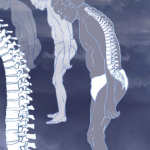 BALTIMORE—Often in rheumatology, technical terms and definitions represent more than just semantics. Indeed, having a shared understanding among clinicians of what constitutes a clinical disorder or disease can be essential to appropriately diagnose and treat patients. At the 17th Annual Advances in the Diagnosis and Treatment of the Rheumatic Diseases meeting at the Johns Hopkins University School of Medicine, Baltimore, Atul Deodhar, MD, professor of medicine in the Division of Arthritis and Rheumatic Diseases, Oregon Health and Science University, Portland, helped provide clarity on non-radiographic axial spondyloarthritis and other related topics.
BALTIMORE—Often in rheumatology, technical terms and definitions represent more than just semantics. Indeed, having a shared understanding among clinicians of what constitutes a clinical disorder or disease can be essential to appropriately diagnose and treat patients. At the 17th Annual Advances in the Diagnosis and Treatment of the Rheumatic Diseases meeting at the Johns Hopkins University School of Medicine, Baltimore, Atul Deodhar, MD, professor of medicine in the Division of Arthritis and Rheumatic Diseases, Oregon Health and Science University, Portland, helped provide clarity on non-radiographic axial spondyloarthritis and other related topics.
Classification Criteria
In 2009, Rudwaleit et al. published a landmark article describing the Assessment of SpondyloArthritis International Society (ASAS) classification criteria for axial spondyloarthritis.1 Contrary to popular belief, the term non-radiographic axial spondyloarthritis (nr-axSpA) does not require the absence of sacroiliitis on imaging. Patients with definite radiographic sacroiliitis on X-rays (i.e., grade 2 bilateral or grade 3 or 4 unilateral sacroiliitis, according to the 1984 Modified New York Criteria for ankylosing spondylitis) and with at least one clinical feature of axial spondyloarthritis (axSpA) meet the definition for ankylosing spondylitis.
Meanwhile, patients can meet criteria for nr-axSpa in a number of ways: 1) having acute (active) inflammation of the sacroiliac joints on magnetic resonance imaging (MRI) with at least one clinical feature of spondyloarthritis; 2) having grade 2 unilateral or grade 1 unilateral or bilateral sacroiliitis on X-rays and meeting two or more clinical features of axial spondyloarthritis; or 3) demonstrating positive HLA-B*27 and meeting two or more clinical features of axial spondyloarthritis.1
Dr. Deodhar made several insightful points on this subject. First, he noted that the distinction between radiographic and non-radiographic axial spondyloarthritis is somewhat arbitrary. If one clinician believes that X-rays for a patient show only unilateral grade 2 sacroiliitis but another clinician believes they show bilateral grade 2 sacroiliitis, then the same patient would be labeled with nr-axSpA in the first instance and radiographic axial spondyloarthritis in the second instance. It’s impossible to say which clinician’s assessment is truly correct, and thus the labeling of the condition is in the eye of the beholder.
Nevertheless, Dr. Deodhar explained that identifying patients with nr-axSpA is an important starting point in following the course of disease. Fewer than 5% of patients with nr-axSpA have self-limiting disease: 5–30% of patients will progress from non-radiographic to radiographic axial spondyloarthritis over 2–30 years.2 This makes sense when one realizes that patients with advanced spondyloarthritis, including end-stage such features as bamboo spine, were not born with these imaging findings, but progressed from more mild to more severe radiographic changes over the course of their lives.


